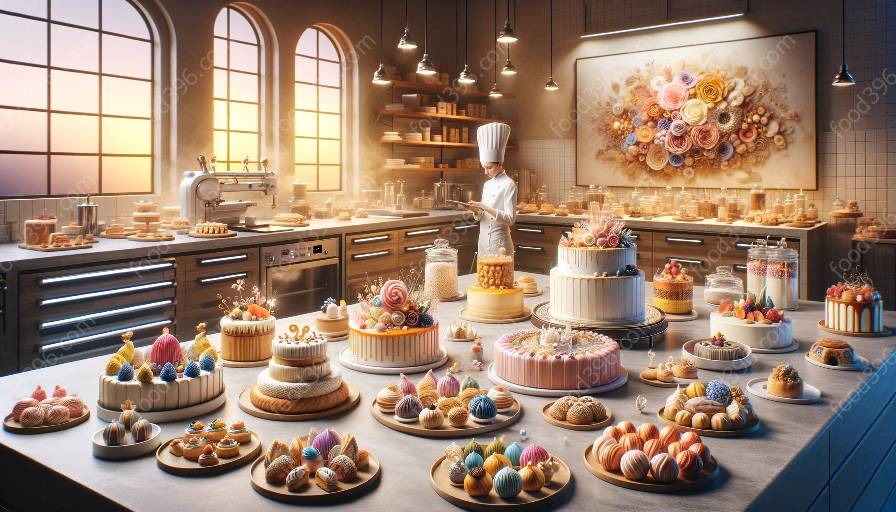Fondant has become a popular medium for creating stunning and often intricate decorations for cakes and pastries. This article explores various techniques for working with fondant, delving into the art, science, and technology behind its use in pastry and baking.
Art and Pastry
Fondant is an incredibly versatile material that has revolutionized the world of pastry arts. When working with fondant, pastry chefs are able to craft elaborate decorative elements, from simple patterns and shapes to intricate figurines and sculptures. Techniques such as molding, shaping, and sculpting allow for an endless array of creative possibilities.
Decorative Techniques
Decorating with fondant involves a range of techniques beyond shaping and molding. Some of the most popular methods include embossing, painting, airbrushing, and stenciling. These techniques give pastry artists the ability to add layers of texture, depth, and detail to their creations, elevating the overall aesthetic appeal of the finished product.
Baking Science and Technology
From a scientific and technological standpoint, working with fondant requires a deep understanding of baking principles. Factors such as humidity, temperature, and composition play a critical role in the success of fondant applications. Pastry chefs must consider the properties of the fondant itself, such as elasticity, pliability, and stability, as well as the interaction between fondant and other elements of the dessert.
Embracing Texture and Form
One of the fundamental aspects of fondant work is the ability to manipulate its texture and form. Achieving the right consistency and smoothness is essential for a flawless finish. Pastry artists use techniques such as rolling, kneading, and stretching to create a flawless surface on which to apply their designs, ensuring that the fondant adheres impeccably to the underlying cake or pastry.
Embossing and Imprinting
Embossing and imprinting are popular techniques for adding intricate patterns and designs to fondant. Pastry chefs use embossing tools and molds to create raised designs on the surface of the fondant, adding dimension and visual interest. Imprinting involves pressing textured materials, such as lace or fabric, onto the fondant to transfer intricate patterns. These techniques add a level of sophistication to fondant decorations, creating visually stunning results.
Precision Cutting
To achieve clean and precise edges, pastry artists use various cutting techniques when working with fondant. Precision cutting tools, such as pastry wheels, knives, and custom-made templates, allow for intricate and detailed designs. This level of precision is essential for creating seamless and professional-looking decorations.
The Importance of Color
Color plays a crucial role in fondant work, as it enhances the visual impact of the decorations. Pastry artists often use edible food colors, dusts, and petal powders to bring their designs to life. Techniques such as marbling, blending, and airbrushing allow for the creation of custom colors, gradients, and shading, resulting in visually striking and vibrant decorations.
Layering and Assembly
Layering and assembly techniques are essential for creating multi-dimensional fondant decorations. Pastry artists carefully construct and stack individual fondant elements to achieve depth and complexity in their designs. Techniques such as ruffling, pleating, and lacing enable the creation of intricate fabric-like textures, adding an element of elegance to the finished product.
Achieving Realism
For pastry chefs seeking to create realistic fondant decorations, techniques such as hand-painting, airbrushing, and edible ink printing are invaluable. These methods allow for the reproduction of intricate details, textures, and shading, resulting in lifelike representations of flowers, animals, and other objects. By incorporating these techniques, pastry artists can achieve a level of realism that is truly awe-inspiring.
The Intersection of Art and Science
Working with fondant beautifully illustrates the intersection of art and science in the world of pastry. It combines the artistic creativity and craftsmanship of pastry arts with the scientific precision and technical skill of baking science and technology. As a result, mastering fondant techniques requires a deep understanding of both disciplines, making it a truly fascinating and rewarding endeavor for pastry enthusiasts.


